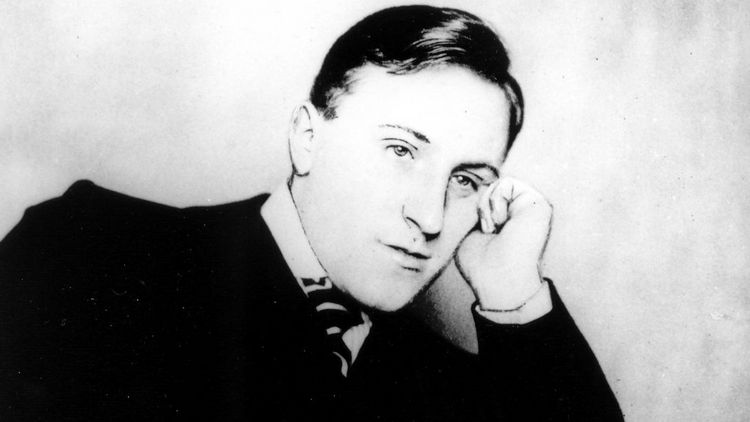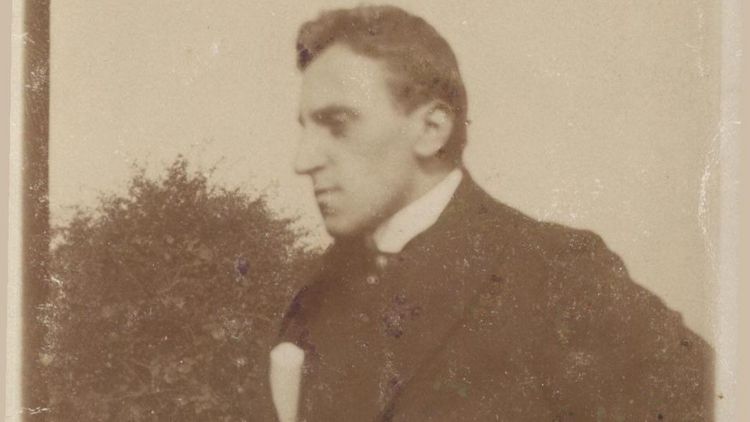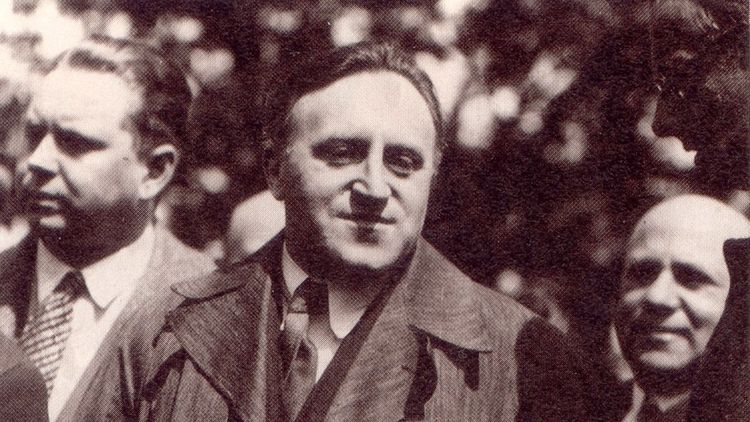Who was Carl von Ossietzky? The university's namesake had long been the subject of controversy. Alexandra Otten and Werner Boldt talk about Ossietzky, a staunch democrat who fought for peace and human rights.
Have you been thinking about Carl von Ossietzky more often recently?
Otten: The university is marking its 50th anniversary, so there are more inquiries about Carl von Ossietzky than is usually the case. This means that I, too, have been thinking about him more than usual. I think he would approve of the current wave of protests against right-wing extremism. No doubt he would have liked to see similar protests against the National Socialists back then.
Carl von Ossietzky is often described as a "pacifist and democrat", but what precisely were the values he stood for?
Boldt: "I am, have always been and will always be a pacifist!" Ossietzky said in an interview conducted under the supervision of the Secret State Police (Gestapo) after he was awarded the Peace Nobel Prize. "This statement," said a Gestapo officer in a letter addressed to Hermann Göring, "means that even in a National Socialist Germany he would not and could not give up his current political position. In other words, he is consciously opposed to the National Socialist ideology of rehabilitation and rearmament of the German nation." But his political ideas were actually broader in scope. His political home was the German Peace Society and later on the German League for Human Rights, which campaigned for the rights of individual citizens, for justice in interstate relations and for the creation of international organisations.
What other values besides pacifism did he stand for?
Boldt: He campaigned for the "fundamental rights and obligations of the German people" that were enshrined in the Weimar Constitution. Ossietzky saw these basic rights as "a programme of political education for decades to come." He believed the constitution as a whole contained "the best social and moral tendencies of modern society". By this he meant that it resolved the class antagonisms between the "Bürger" ("citizens") and the "Arbeiter" ("workers"). He never used the terms "bourgeoisie" or "proletariat" in his writings.
How did he become a symbolic figure for the resistance against fascism?
Otten: In the old Federal Republic of Germany for a long time he wasn't a symbol of resistance, because so little was known about him and his work. There were various, often inaccurate interpretations concerning Ossietzky. He was alternately seen as a victim, a martyr, a pacifist, a communist and even as a traitor to his country. The university's Carl von Ossietzky research centre deserves credit for researching and publishing Ossietzky's biography and works between 1988 and 1996, because this was what paved the way for him to become a symbolic figure. It was a different matter in the GDR: its culture of remembrance was controlled by the state, which cast Ossietzky as an anti-fascist.
Was Ossietzky an unconditional pacifist who also openly criticised the rearmament of other states?
Boldt: Ossietzky frequently criticised that all over the world states were building up their armies and weapons even more than before 1914. He spoke out about this in more detail after the notorious Weltbühne trial, in which he personally was involved. In 1931, Ossietzky and Walter Kreiser were sentenced to prison for treason because of an article that alluded to cooperation on rearmament – stricty prohibited by the Treaty of Versailles – between the Reichswehr (the armed force of the Weimar Republic) and the Soviet Union. Kreiser was the author of the article and Ossietzky the editor of the Weltbühne weekly paper that published it. Kreiser fled to France and published details about the trial and judgment in a French newspaper. Ossietzky, however, described the French newspaper as a "highly capitalist medium, with close connections to the armaments industry", and then made a comment about Kreiser that revealed his aversion to any kind of rearmament, regardless of who was behind it: "[Kreiser] thought that he was contributing to the liberation of Germany from the spirit of militarism, when his hand was really led by the journalistic tools of French gun makers, whose invisible and involuntary customers are, in the final analysis, German nationalism. […] That is in accordance with the laws of motion of the bloody international." This last sentence was a reference to the international entwinement of the armaments industry.
UNI-INFO: Why was he awarded the Nobel Peace Prize in 1936 (retroactively for 1935)?
Otten: The Nobel Prize Committee received 86 nominations for Ossietzky – more than for any other individual to this day. This success was the result of a tireless campaign by a group of friends and supporters. This group, led by two journalists, managed to gather all these nominations within two months, simply by writing letters and using personal contacts. Ossietzky received the prize not only for his commitment to democracy and peace. He was also the first person to be awarded the Nobel Peace Prize for the suffering he experienced as a result of his convictions.
What was the significance of the award back then – also in comparison to today?
Otten: Carl von Ossietzky considered it an honour to receive the award. He wrote: "After lengthy consideration, I have decided to accept the Nobel Peace Prize. I do not share the view expressed to me by the representative of the Secret State Police (Gestapo) that I am thus excluding myself from the German national community. The Nobel Peace Prize is not a symbol of internal political struggle but of understanding between peoples."
How relevant do you think Ossietzky's work is today?
Boldt: Ossietzky's writings are still helpful in exploring the "socio-moral" causes of political developments – even if today's political conditions cannot be equated with those of the Weimar Republic. There was no broad mass movement against the right that reached deep into the middle classes back then, for instance. Nevertheless, it can still be beneficial to study and discuss Ossietzky today –and in my opinion there is still plenty of scope for this – also to strengthen our commitment to democracy.
Are there any aspects that could be criticised from today's perspective?
Otten: I'm not sure what Ossietzky's image of women was. On the one hand, he advocated equal rights in many articles in which he wrote about emancipated, working women. He honoured the work of Annette Kolb and Käthe Kollwitz, for example. However, he also paid attention to outward appearances. He once mocked the lacking physical attributes of the "ladies of the Reichstag". In his private life he preferred to be the sole breadwinner, providing for his family and making all the decisions – despite the fact that his wife Maud was also employed when they first got married. I think he was old-fashioned in that respect.
How would you describe Ossietzky as a person?
Boldt: Ossietzky was a very reserved person. He considered himself recalcitrant. I think that he was unwavering in his convictions. He wasn't stubborn, but he didn't conform, and he didn't self-censor. Three times he gave up a safe position. Overall, I find his firm, if somewhat gruff character very impressive.
Otten: I would describe Ossietzky as a quiet person. However, this changed as soon as he started giving public speeches. He even gave a speech at the "Never Again War Movement" in front of an audience of around 200,000. It was similar with his articles. He became a sharp critic and analyst with a fine sense of irony.
Interview: Ute Kehse and Henning Kulbarsch
Prof. Dr. Werner Boldt, is a historian and one of the editors of Carl von Ossietzky – Sämtliche Schriften (Carl von Ossietzky – the complete works edition). He taught and researched at the University of Oldenburg for almost 30 years until his retirement in 2000.
Alexandra Otten is a historian at the University Library and curator of the permanent exhibition on Carl von Ossietzky.








